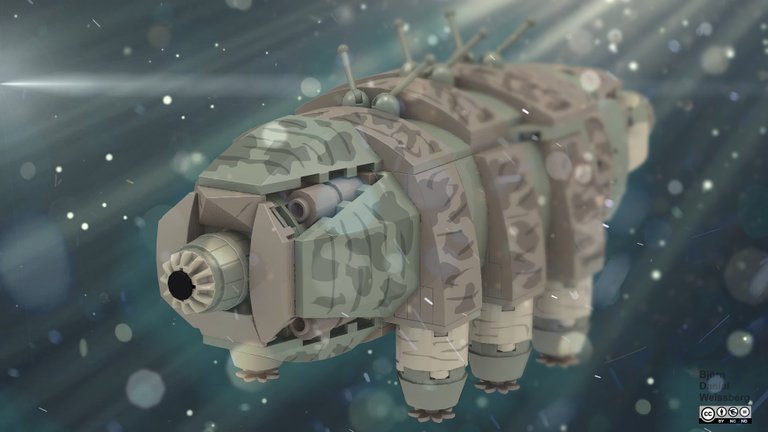Shooting Tardigrades From Cannons
Tardigrades are very hard to kill. So, British astrobiologists decided to try out whether a high-speed cannon can kill them in an attempt to simulate meteorite impacts to see whether tardigrades could spread life to other places in the Universe.

- Be also sure to check out my other posts and follow me @kralizec and subscribe to my Youtube channel at Kralizec Gaming Youtube Channel
Tardigrades are legendary for their durability. Many people think they can survive anything. This led to wild hypotheses that claim tardigrades could spread through the Universe if they hitch a ride on a meteorite. But this seems unlikely as we just don’t see the Universe or even our Solar System being full of tardigrades or similar super-durable organisms.
But, why not test the hypothesis anyway? Who would be able to resist the idea of shooting a tardigrade from a high-speed cannon? The team from the University of Kent certainly didn’t resist. They checked how exactly tardigrades are durable by firing frozen tardigrades from a high-speed gas cannon at different speeds into sand and observed how the tardigrades survive. This represented meteorite impacts that would be required for the tardigrades to spread among different worlds.
The amount of “superpowers” that tardigrades have is quite amazing. They can survive through heat, freezing, drought, intense radiation, immense pressures, or even being released into space! Many of these feats are achieved by entering a state called cryptobiosis in which all metabolic processes stop and thus the tardigrades become incredibly durable.
To perform the experiment, the researchers first froze the mixture with the tardigrades for 48 hours. This forced them to enter the cryptobiosis and activate their superpowers. They then loaded the ice with the tardigrades into the cannon and fired it into sand while measuring the speed of the shots and the pressure the impact caused. After every shot, they analyzed the state of the tardigrades and searched for any damage.
The results show that the limit speed of impact that the tardigrades are capable of surviving is about 3,240 kph or 900 meters per second. When the tardigrades impact at this speed a pressure equal to about 1,14 GPa affects the tardigrades. To give a bit more information, when the speed was 2,261 kph (628 m/s) then 100 % of the tardigrades survived while at a speed of 2,970 kph (825 m/s) only about 60 % remained alive. At the same time, the shots also made the tardigrade “revival” process much slower – about four times as long.
So, the experiments show us that tardigrades certainly aren’t invincible. They wouldn’t survive the most extreme meteorite impacts. But, they could possibly survive some of the slower impacts. For example, out of the meteorites hitting the Moon about one-third of them are slow enough. Thus, the conclusion is actually more optimistic than anyone expected. Under certain specific conditions, the spread of life through meteorites is possible.
Sources:
- If you like the content I’m producing about science maybe you will like the content I produce about gaming as well! Be sure to check out my other posts!